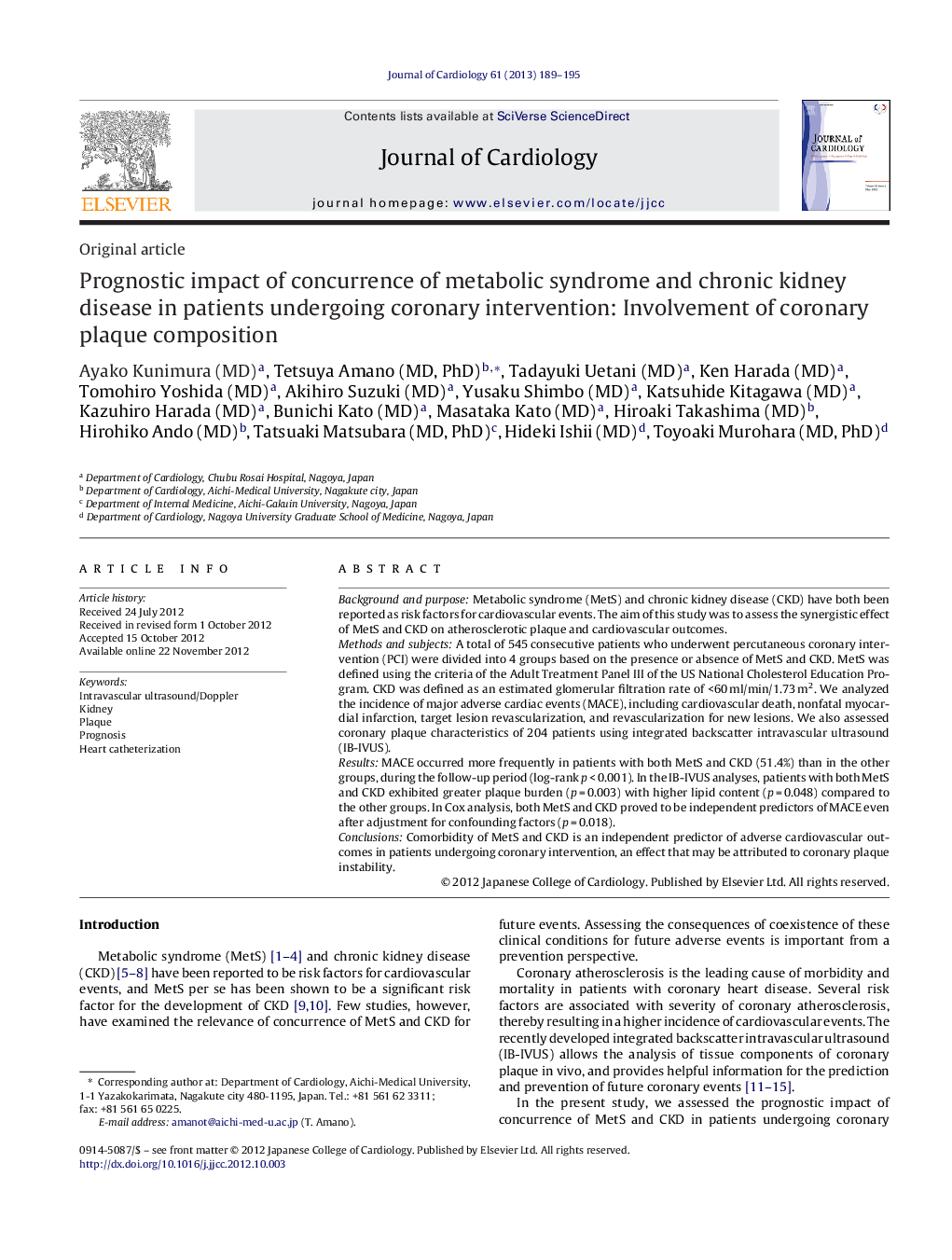| Article ID | Journal | Published Year | Pages | File Type |
|---|---|---|---|---|
| 5984267 | Journal of Cardiology | 2013 | 7 Pages |
Background and purposeMetabolic syndrome (MetS) and chronic kidney disease (CKD) have both been reported as risk factors for cardiovascular events. The aim of this study was to assess the synergistic effect of MetS and CKD on atherosclerotic plaque and cardiovascular outcomes.Methods and subjectsA total of 545 consecutive patients who underwent percutaneous coronary intervention (PCI) were divided into 4 groups based on the presence or absence of MetS and CKD. MetS was defined using the criteria of the Adult Treatment Panel III of the US National Cholesterol Education Program. CKD was defined as an estimated glomerular filtration rate of <60 ml/min/1.73 m2. We analyzed the incidence of major adverse cardiac events (MACE), including cardiovascular death, nonfatal myocardial infarction, target lesion revascularization, and revascularization for new lesions. We also assessed coronary plaque characteristics of 204 patients using integrated backscatter intravascular ultrasound (IB-IVUS).ResultsMACE occurred more frequently in patients with both MetS and CKD (51.4%) than in the other groups, during the follow-up period (log-rank p < 0.001). In the IB-IVUS analyses, patients with both MetS and CKD exhibited greater plaque burden (p = 0.003) with higher lipid content (p = 0.048) compared to the other groups. In Cox analysis, both MetS and CKD proved to be independent predictors of MACE even after adjustment for confounding factors (p = 0.018).ConclusionsComorbidity of MetS and CKD is an independent predictor of adverse cardiovascular outcomes in patients undergoing coronary intervention, an effect that may be attributed to coronary plaque instability.
